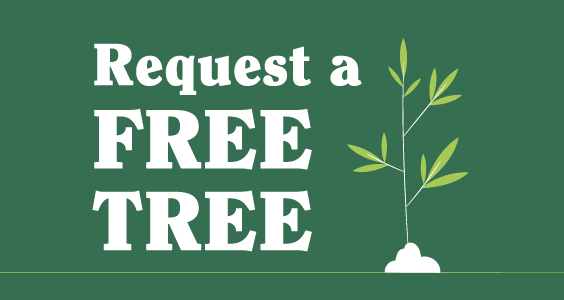Happy Earth Month from Tree Eastie
- Evonne Soon
- Apr 4, 2024
- 4 min read
Tree Eastie is a community based urban forestry program focused on increasing the tree canopy in East Boston by planting more trees in high urban heat islands, educating residents on the benefits of trees, and ensuring the proper maintenance and care of new and existing trees.
Since October 2021, Tree Eastie has planted over 300 trees throughout East Boston. We collaborate closely with Boston Parks and Recreation and are responsible for watering all street and park trees we plant. Our funding comes from grants and individual donations. An Adopt A Tree program encourages residents to care for street trees in front of their homes.
Our incredible volunteers plant and maintain trees, clean tree pits, canvas neighborhoods to encourage residents to request a street tree, distribute tree benefit literature, write grants, and publicize our events. Volunteers are the heart of our organization.
Want a free tree in your yard?
Tree Eastie will source, deliver and plant a tree in your yard. We follow the approach of "right tree in the right place", so we will help you determine the correct species. Click here to order a free yard tree for yourself!
Want to add some shade in front of your house?
Any resident of Boston can request to have a street tree planted in front of their home or business! Click here for Tree Eastie to submit the request for you!
Street tree requirements
🌳 An arborist must inspect the site to determine if a tree can be planted.
💡 The spot must be 10 feet from any light poles, driveways, or hydrants, 10-20 feet from any intersections and the sidewalk must be six-feet wide (72 inches), not including the curb.
➡️ Click here for a full list of requirements and details
➡️ Click here for details on selecting a species and care tips
Join Tree Eastie for three tree planting events during Earth Month.
On Friday, April 5th from 10am-1pm we're planting bare root trees with the City of Boston at Noyes Park. This will be our first bare root tree planting so we hope you can join us!
On Arbor Day, Friday, April 26th from 10am-2pm, we’ll be at Memorial Park planting trees, watering and mulching existing trees, trimming branches, and removing any dead trees.
On Saturday, April 27th from 10am-2pm, we’ll plant 7 new trees at Brophy Park and replace ones lost during last year’s wind storm.
Tools, instructions, and refreshments will be provided, and volunteers are always welcome.
Tree Pruning Clinic
In our first event of the season, Tree Eastie hosted a fruit tree pruning clinic on Saturday, March 30th at the Rockies Urban Wilds on Marginal Street. Assisted by Nick Long of the Urban Wilds and Earl Rivers, Certified Arborist, participants learned proper pruning techniques and then applied their new skills to the fruit trees in the Urban Wilds orchard. Our peach, pear, apple and cherry trees look great, are full of buds and should generate a bountiful harvest which we'll distribute through Eastie Farm this fall!
Arborist Corner
by Claire Corcoran, Certified Arborist
Spring is my favorite season of the year! The soil smells so good as it warms up and the garden is full of promise.
An easy way to set your tree up for the growing season is to install or replace a mulch ring around the trunk. A fresh application of mulch will bring nutrients and beneficial microbes to your soil, while increasing its ability to retain moisture, and preventing weeds from establishing:
1. Start by raking up the old, woody mulch, and place it in a brown leaf bag (making sure to not put soil in as well). The City of Boston collects yard waste and composts it. Check here for more information on their schedule and policies.
2. When applying fresh mulch, choose undyed, natural mulch rather than mulch that has been dyed red or black. Avoid the use of pebbles or stones as a ground cover: pebbles are just small rocks, and the aggregate weight of them causes increased soil compaction, which is already one of the biggest challenges to trees in urban settings. Conventional mulch improves soil texture as well as nutrient availability, while stones actually worsen soils by decreasing available oxygen and water in the soil.
3. Apply the mulch in a 2-3 inch layer inside the drip line of the tree’s canopy, making sure to leave about an inch of bare soil around the base of the trunk.
4. Avoid the dreaded “mulch volcano”, which is a common mistake by commercial landscapers who pile mulch in a rounded mountain up around the tree trunk. This practice is bad for the health of the tree, because it brings moisture and bacteria in contact with the bark and creates an environment where pathogens can flourish.
5. Lastly, if someone offers you “bulk mulch” or unbagged mulch, make sure to ask if they have invasive jumping worms on their property. These invasive species are spread by humans, as they lay microscopic eggs in soils and mulch piles. They are very harmful to soils and are difficult to eradicate. Bagged mulch products have not been known to harbor these bad worms as the mulch is effectively heat pasteurized inside the plastic bags.
Claire Corcoran has a Master of Forestry degree, as well as two arborist certifications (Mass Certified Arborist from Mass Arborists Association and Tree Risk Assessment Qualification from the ISA). Look out for her tree advice & wisdom in future Arborist Corner segments.










Comments